Did You Know?
Did you know that the Moline Universal motor cultivator built from 1915-1923 was regularly equipped with self-starter and lights?
John Willys, (from the Willys-Knight Motor Car Company) was a large stockholder of Moline Plow Company. In 1914 the Moline-Knight automobile was produced.
The Twin City 12-20 designed for the 1919 market year was being built and sold in the fall of 1918. This compact unit frame design used two intakes and two exhaust valves per cylinder. This was accomplished with twin camshafts and yielded very high fuel economy. A larger sibling, the 20-35, introduced in 1920, was also a twin cam, 16 valve four-cylinder.
Some of the early MM-Twin Cities sold by Waterloo Company of Canada, like the KTA and 27-44 were referred to as MM-Waterloo tractors and had those letters cast in the top radiator tank.
The high production MM Model Z had no push rods or lifters in its engine. Horizontal valve placement used foot long vertical rocker arms from cam lobe to valve tip.
It is generally assumed the entire Z, ZA, and ZB series used a 206 cubic inch engine, however, the early Z was actually a 185 cubic inch.
MM engineers pioneered the use of liquefied petroleum and produced the first factory built LP gas tractors in 1941.
The MM G-707 and G-708 still used a hand clutch in 1965. The R and G series used hand clutches to productions end in 1955. Many people mistakenly believe the hand clutch disappeared when the ZB-UB series was introduced in 1953.
From 1937 to 1947 MM tractors were yellow, not Prairie Gold! The famous orange hued Prairie Gold did not show up in company advertising or tractor finishes until 1947 or 1948. Prairie Gold was used from 1948 to 1960. 4 Star, M5, and G-VI had a darker shade of Prairie Gold tinwork and metallic bronze chassis. Early Jet Stars were all metallic bronze. Through the Sixties, late Jet Star, U, M, and G series were Energy Yellow, with Dyna Brown chassis. Some final models in the late Sixties and early Seventies were red and white. Minneapolis Moline used more than six colors from 1937 to production’s end in 1973.
~Tony Thompson


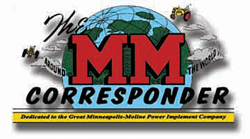
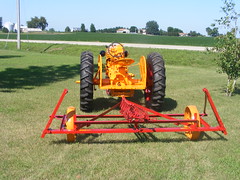
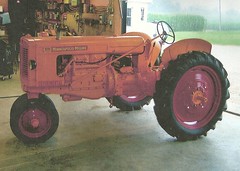
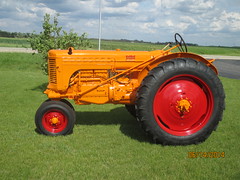
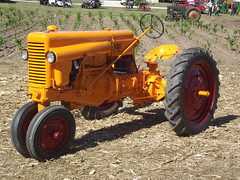


Prairie Gold Goes back to approx 1937 in Official Company papers. Quick ref. shows 1941 MM calendar Order your Prairie Gold & Red Color Tractor Umbrellas, on page 23.
i have a minneapolis moline UB that im restoring and im looking for a complete set of rocker arms. could any help'' i have been looking for some time now does any one no where i could fine a set to buy ? i would really apperaite the help